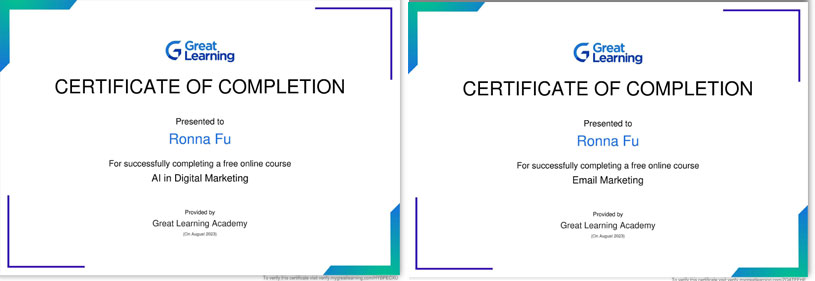

This summer, I enrolled in as many courses as I could to increase my understanding of every facet of marketing. My most recent courses were Email Marketing and AI Marketing.

When done right, Email Marketing can be a powerful instrument for establishing and fostering customer relationships, boosting revenue, and preserving brand engagement. To get the best outcomes, it is critical to regularly modify your plans based on subscriber behaviour and market trends.
Here are some key aspects and best practices of Email Marketing:
The first step in creating a subscriber list is to compile a list of people who have granted you consent to send them emails. Website sign-up forms, social media, events, and other lead generating techniques can all be used to do this.
Individual subscribers are not all created equal. Segment your email list according to several factors, such as demographics, interests, behaviours, or past purchases. This enables you to send each segment more pertinent and customised material.
Subscribers should be addressed by name, and content should be tailored to their preferences. Emails that are personalised typically have greater open and engagement rates.
Provide your subscribers with worthwhile and pertinent information. This could consist of product updates, informational materials, special deals, or market insights.
Your email’s subject line is what persuades recipients to open it. Make sure it is compelling, clear, and concise.
Your emails should be designed for mobile viewing since many consumers check their emails on mobile devices.
A crystal-clear CTA should be included in every email. Make it simple for recipients to perform the required activity, whether it’s to buy something, read an article, register for an event, or download something.
Test several aspects of your emails on a regular basis to evaluate what works best, including subject lines, content, CTAs, and sending times. To evaluate the success of your efforts, use analytics to analyse open rates, click-through rates, conversion rates, and other data.
Make sure you have permission to send emails to your subscribers and that your emails adhere to anti-spam legislation (such the CAN-SPAM Act). Additionally, stay away from overusing capitalization, overusing graphics, and specific terms that could set off spam filters.
To send emails, strike the perfect mix between frequency and quality. Too many emails can force subscribers to unsubscribe, while too few can make them forget about you.
Make sure you always provide subscribers with a simple way to unsubscribe from your emails. As a result, trust is increased and it is easier to keep an active subscriber base.
Utilise email marketing systems with automation features. With the help of triggers like user actions or dates, you may create automatic email sequences.
AI Marketing, also known as artificial intelligence marketing, refers to the use of artificial intelligence (AI) and machine learning techniques to enhance and optimize various aspects of marketing strategies and campaigns. AI has the potential to transform how businesses engage with their customers, analyze data, and make data-driven decisions to improve overall marketing effectiveness.
While AI can have a positive impact on marketing, it is vital to remember that there is no one-size-fits-all AI solution. To ensure that the technology is in line with the overall marketing strategy and produces the expected outcomes, the implementation of AI in marketing necessitates thorough planning, integration with existing systems, and continual monitoring.